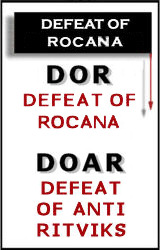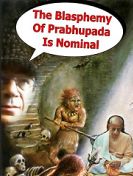Prabhupada, April 18, 1973: “…Just as a woman’s small watch has all the requisite machinery for its smooth functioning, so an ant has all the necessary brain substance to manage its affairs nicely. How is this possible? To answer this properly, you must minutely examine the brain tissues in the ant. But this you cannot do. Moreover, there are innumerable insects smaller than the ant. So there must be a mechanical arrangement for all this detailed activity, but scientists cannot discover it…”
——————————————————————————–

SNIP, SNIPLeaf cutter ants slice foliage into bits that they can carry back to their nests. The ants can't digest the leaves themselves but have what amounts to an external gut, a mix of fungi and nitrogen-fixing bacteria that do the work.
University of Costa Rica: Classic view of leaf-cutter ants overlooked nitrogen-fixing partner
By Susan Milius, November 19th, 2009: Bacteria boost nutrients for fungal crops that feed millions of six-legged farmers
No pigs or chickens yet. But the vast farms where leaf-cutter ants raise their fungal crops may harbor a crew of previously overlooked farmhands — nitrogen-fixing bacteria.
At least eight species of leaf-cutter ants typically live with bacteria that capture nitrogen from the air and turn it into a form that living organisms can use, says microbial ecologist Adrián Pinto-Tomás of the University of Costa Rica in San José. He and his colleagues propose that these bacterial helpers might explain how the ants feed up to 8 million workers in a single colony just by harvesting bits of nitrogen-poor leaves and letting a fungus grow on them.

The queen of a leaf-cutter colony visits one of the ants' gardens, where green leaf bits feed the pale, spongy fungus that in turn can feed several million ants in a mature colony. A queen can live 15 years and lay some 200 million eggs.
Neither the fungus nor the ants, nor any other multicellular organisms, can use the atmosphere’s abundant nitrogen directly. Pinto-Tomás and his colleagues tracked the path of nitrogen through ant nests and tested inhabitants for genes active in capturing the nutrient from the air. Live-in bacteria, particularly in the genus Klebsiella, could provide an estimated 45 to 60 percent of the nitrogen in the ants’ food, the researchers report in the Nov. 20 Science.
“I find it very exciting,” says entomologist Ted Schultz of the Smithsonian’s National Museum of Natural History in Washington, D.C. Fungus-growing ants “have become a model system for studying symbioses and coevolution,” Schultz says. “This discovery makes the system that much more interesting and that much more complicated.”
“I used to think of this as a two-part mutualism between ants and fungi,” Shultz says. The idea of such a tidy arrangement has been shaken up before. In 1999, one of the coauthors on the current paper, Cameron Currie of the University of Wisconsin–Madison, and his colleagues proposed the idea — still under debate — that bacteria growing on the ants’ bodies secrete weed killers for defending the fungus garden.
To see whether ant farmers also have their own fertilizers, the researchers used a standard chemical test, acetylene reduction, to look for nitrogen fixing activity. This approach detected nitrogen fixation in the fungal mass with its associated microbes in the garden. Molecular tests of the nifH gene, which encodes part of a nitrogen-fixing enzyme, confirmed that bacteria were indeed fixing nitrogen when living in ant colonies.
Nitrogen-fixing bacteria turned up in the majority of 80 ant colonies representing eight species of Attini leaf-cutter ant, the researchers said. Sampling required digging up parts of the colonies as the ant soldiers swarmed out of the ground slicing at the raiders. “They can cut through leather,” says coauthor, microbiologist and digger Garret Suen, also of UW–Madison. He wears rubber boots for ant collection.
The bacteria’s work does end up benefiting the ants, researchers say. When ant colonies tended farms in sealed chambers containing a special mix of nitrogen isotopes, the signature of the atmospheric nitrogen eventually showed up in the ants.
In an analysis of the bacterial family trees, the newly found strains fell into two distinct groups. This pattern raises the possibility that the bacteria may have coevolved as ant farm specialists. If true, that would open a new line of inquiry into this ancient symbiosis.
Agricultural ecologist Ford Denison of the University of Minnesota in St. Paul says he’d like to know what the effect of this extra nitrogen would be on the plants and other living things in the ants’ neighborhood. The study’s authors propose that ant farm bacteria could represent a potentially major source of fixed nitrogen in their ecosystems. Denison cautions that it’s too early to say.







Speak Your Mind